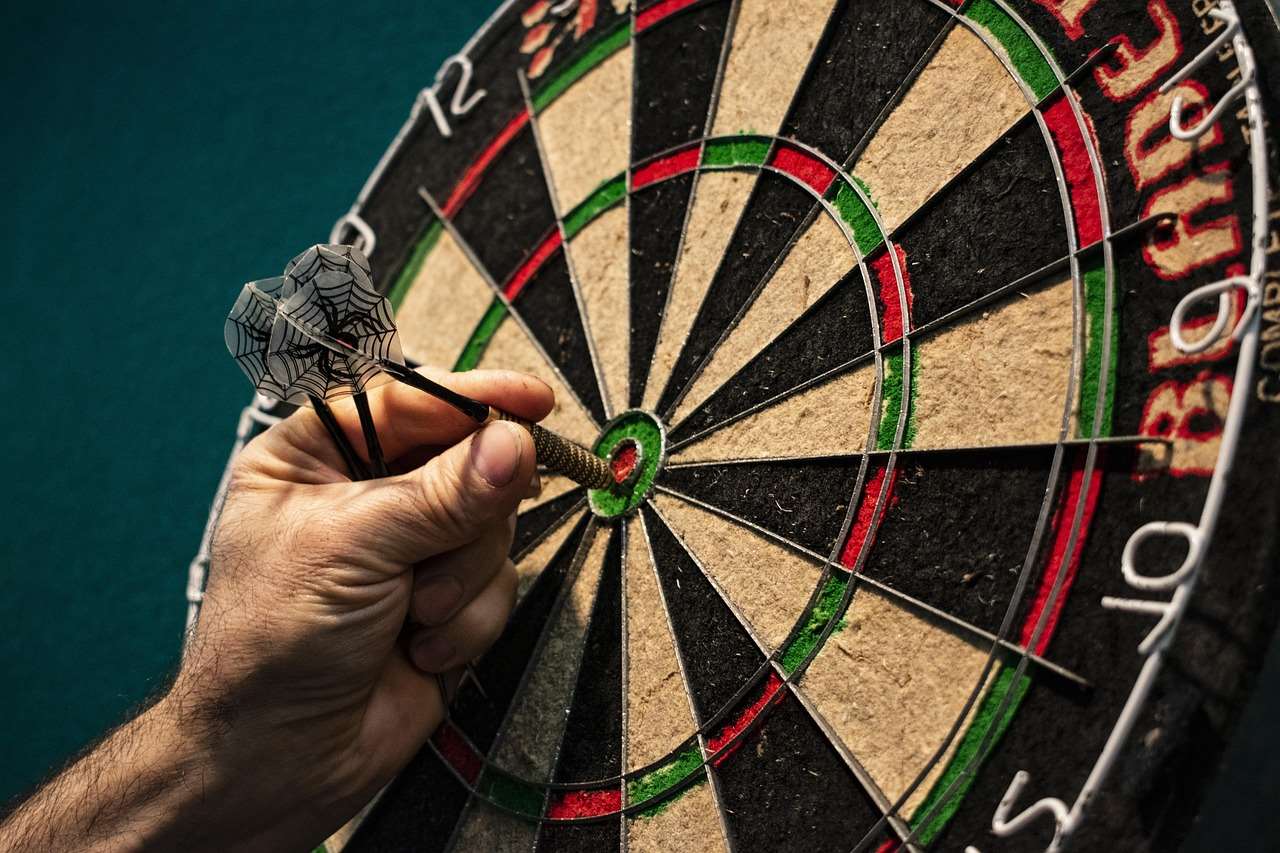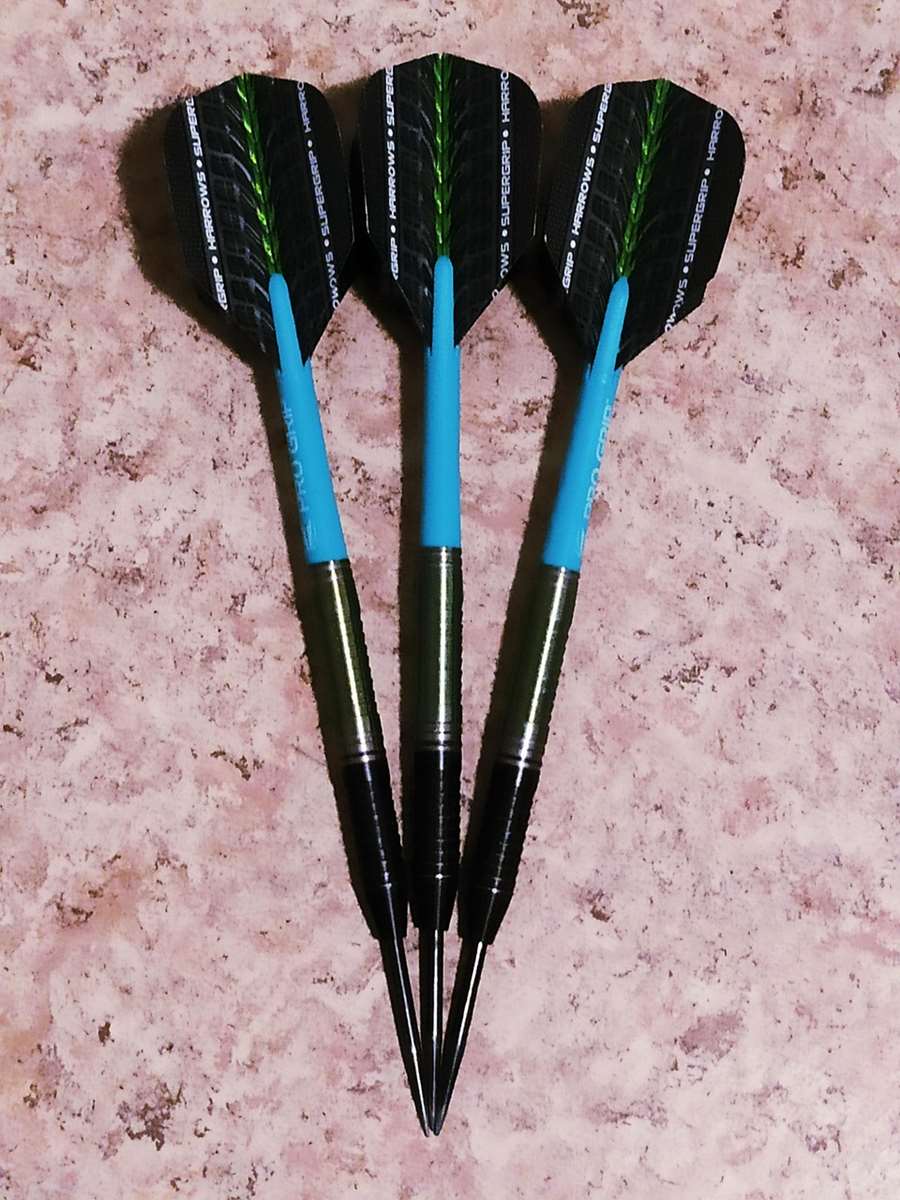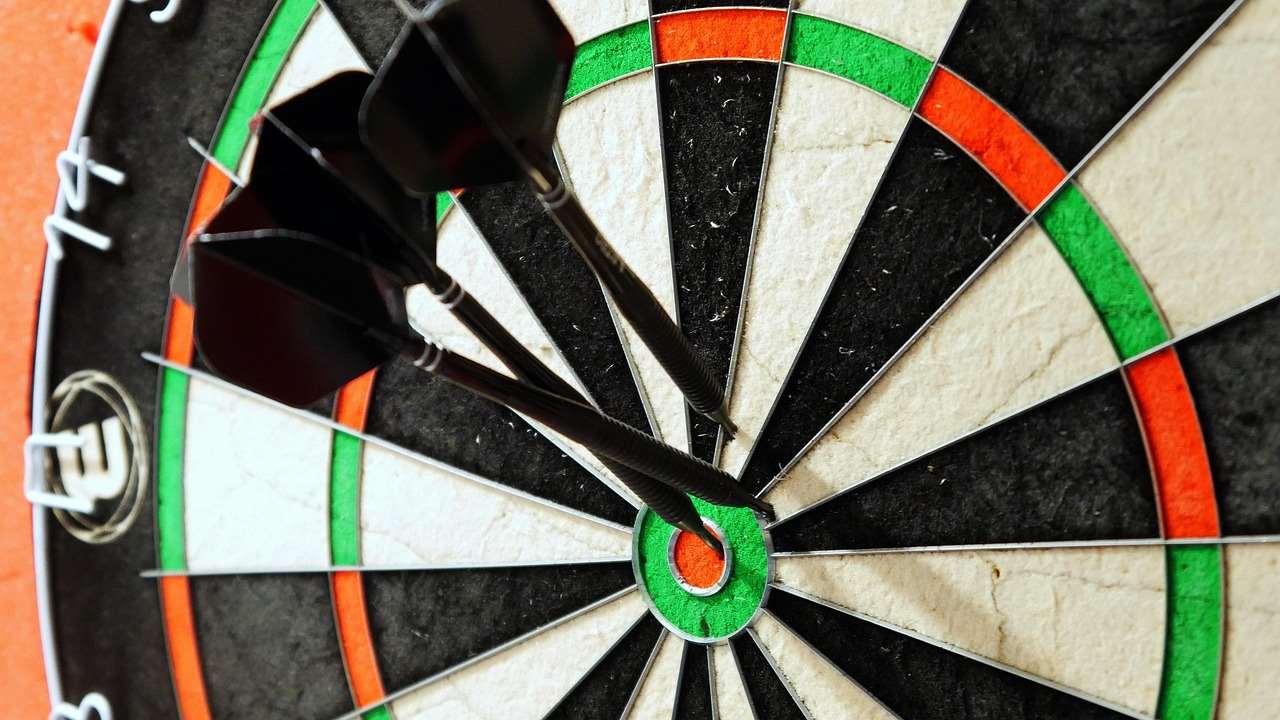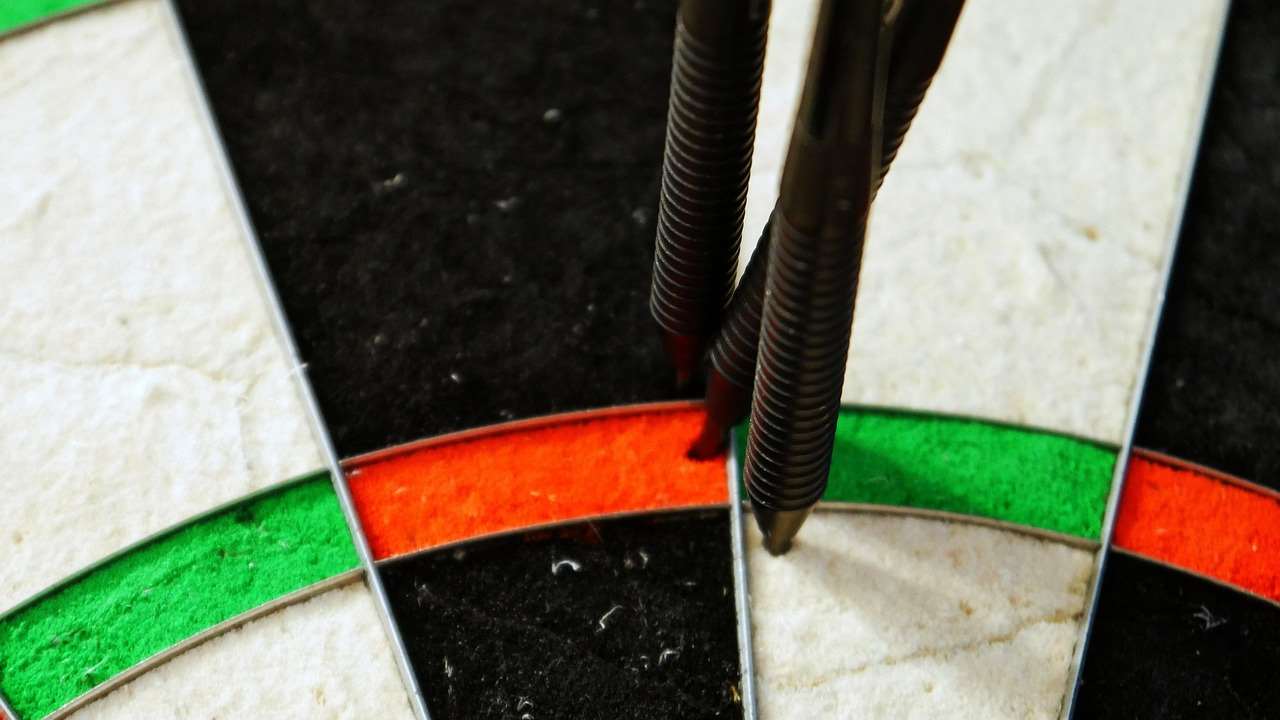If you’ve got sizable hands and struggle to find a comfortable and consistent grip on your darts, you’re not alone. The key to improving your game might just be finding the **best grip for large hands darts**. This article will explore various grip styles, dart features, and techniques to help you achieve a more natural and effective throw, ultimately boosting your accuracy and enjoyment of the game.
⚠️ Still Using Pen & Paper (or a Chalkboard)?! ⚠️
Step into the future! The Dart Counter App handles all the scoring, suggests checkouts, and tracks your stats automatically. It's easier than you think!
Try the Smart Dart Counter App FREE!Ready for an upgrade? Click above!
Understanding the Challenges of Darts Grips for Large Hands
Having larger hands presents unique challenges when it comes to dart grips. Standard dart designs often feel too small, leading to a cramped or awkward grip. This can result in inconsistent releases, reduced control, and ultimately, lower scores. Finding the right balance between comfort and control is paramount.
Common Issues Faced by Players with Large Hands:
- Cramped Fingers: Standard dart barrels can feel small, forcing fingers into an uncomfortable position.
- Inconsistent Grip Pressure: Difficulty applying even pressure across the dart, leading to erratic throws.
- Lack of Control: Feeling like the dart is slipping or not properly controlled during the throw.
- Muscle Fatigue: Gripping too tightly to compensate for the small size, resulting in hand and forearm fatigue.
Addressing these issues requires a thoughtful approach that considers dart weight, barrel shape, grip style, and even the type of dart points used.

Exploring Different Grip Styles for Enhanced Control
Several grip styles can be adapted to accommodate larger hands, each offering a different level of control and feel. Experimenting with different techniques is crucial to finding what works best for you. We can also Choose Best Dart Equipment to start your journey to find the ideal dart.
The 3-Finger Grip:
This is a common and versatile grip that involves using the thumb, index finger, and middle finger to hold the dart. For larger hands, focus on:
- Positioning: Place the thumb slightly behind the center of gravity, with the index and middle fingers providing support.
- Pressure: Apply even pressure with all three fingers, avoiding a death grip.
- Barrel Length: Opt for a longer barrel to provide more surface area for your fingers.
The 4-Finger Grip:
Adding the ring finger to the equation can provide extra stability and control, particularly beneficial for those with larger hands. Focus on:
- Finger Placement: Position the ring finger just behind the middle finger, providing additional support.
- Grip Pressure: Distribute the pressure evenly across all four fingers.
- Barrel Width: Consider a slightly thicker barrel to accommodate the extra finger.
The Modified Pencil Grip:
This grip mimics holding a pencil, with the dart resting along the side of the index finger. This can be surprisingly effective for some with larger hands. Key considerations include:
- Dart Position: Ensure the dart is balanced and stable on the index finger.
- Thumb Placement: Use the thumb to guide the dart, rather than applying excessive pressure.
- Barrel Weight Distribution: Experiment with front-weighted or center-weighted barrels to find what feels most comfortable.
Dart Features That Cater to Large Hands
Beyond grip style, certain dart features can significantly improve comfort and control for players with larger hands. Paying attention to these details can make a world of difference.
Barrel Length and Diameter:
As mentioned earlier, a longer and slightly thicker barrel can provide more surface area for your fingers to grip, reducing the feeling of crampedness. Consider barrels that are at least 50mm long and 7mm in diameter. Many people compare Brass vs Tungsten Darts Comparison, since Tungsten darts may be more compact given the increased density of tungsten over brass.
Grip Texture and Knurling:
The texture of the dart barrel plays a crucial role in grip security. Aggressive knurling (small ridges or grooves) can provide excellent grip, but may be too harsh for some. Experiment with different levels of knurling to find what feels most comfortable and secure. Some players prefer micro-grip or shark-fin grip patterns.
Dart Weight:
Dart weight is a matter of personal preference, but generally, heavier darts (24-26 grams) can feel more stable in the hand, especially for those with larger hands. This is because the increased weight can help to minimize unwanted movements during the throw. You can also Choose Right Dart Material Guide to best find a material that fits your needs and preferences.

Materials That Influence Dart Grip
The material the dart barrel is made from can subtly influence your grip. While tungsten is popular for its density, allowing for slimmer barrels, other materials offer different textures and feels.
Tungsten Darts:
Tungsten darts are known for their slim profile, which might seem counterintuitive for large hands. However, the higher density allows for a heavier dart in a smaller package, which can improve control. Tungsten also offers a good grip, especially when combined with knurling. Be sure to check out Tungsten Darts Pros Cons Explained.
Brass Darts:
Brass darts are generally less expensive and often have a smoother surface. They may require a more conscious effort to maintain a secure grip, but some players prefer the feel of brass. Brass can be a good starting point for experimenting with different grip styles and dart weights without a significant investment.
Nickel Silver Darts:
Nickel Silver darts are a mid-range option that offers a good balance of price and performance. They typically have a smoother finish than tungsten, but can still be found with various grip patterns. You can find Nickel Silver Darts Full Info here.
Perfecting Your Throwing Technique for Consistency
Even with the **best grip for large hands darts**, proper throwing technique is essential for consistent results. Focus on the following aspects:
Stance and Posture:
Maintain a stable and balanced stance, with your weight slightly forward. Your posture should be relaxed and upright, avoiding any unnecessary tension.
Arm Movement:
Keep your upper arm relatively still, using your forearm to generate the majority of the throwing motion. Avoid jerky or rushed movements.
Release Point:
Strive for a smooth and consistent release point, aiming to release the dart at the same point in each throw. This requires practice and repetition.
Follow-Through:
Complete your throwing motion with a full follow-through, pointing your fingers towards the target. This helps to ensure a smooth and accurate release.

Tips for Practicing and Refining Your Grip
Finding the ideal dart grip is an ongoing process that requires experimentation and refinement. Here are some tips to help you along the way:
- Experiment with Different Grips: Don’t be afraid to try different grip styles and finger placements until you find what feels most comfortable and natural.
- Record Your Throws: Use a smartphone or camera to record your throws, paying attention to your grip, stance, and arm movement.
- Practice Regularly: Consistent practice is key to developing muscle memory and refining your technique.
- Seek Feedback: Ask experienced dart players for feedback on your grip and throwing technique.
- Be Patient: It takes time and effort to find the perfect grip and develop a consistent throw. Don’t get discouraged if you don’t see results immediately.
Remember, the **best grip for large hands darts** is the one that allows you to throw comfortably, consistently, and accurately.

The Importance of Proper Dart Maintenance
Maintaining your darts in good condition is also crucial for ensuring a consistent grip and throw. Regular cleaning and maintenance can prevent dirt and grime from affecting your grip.
Cleaning Your Darts:
Use a soft cloth and mild soap to clean your darts regularly. Avoid using harsh chemicals or abrasive cleaners that can damage the barrel or flights. Focus on cleaning the grip area to remove any dirt or oil buildup.
Replacing Flights and Shafts:
Worn or damaged flights and shafts can affect the dart’s flight path and grip. Replace them regularly to maintain optimal performance. Experiment with different flight shapes and shaft lengths to find what works best for your throwing style. Many prefer high tungsten darts, you can learn Why Choose High Tungsten Darts.
Advanced Considerations for Dart Grip Optimization
Once you have a solid foundation, you can explore more advanced techniques to further optimize your dart grip.
Using Grip Enhancers:
Some players find that grip enhancers, such as rosin or chalk, can improve their grip security, especially in humid conditions. Experiment with different types of grip enhancers to find what works best for you.
Customizing Your Darts:
If you’re serious about darts, consider customizing your darts with features like custom knurling or grip patterns. This can allow you to create a dart that is perfectly tailored to your individual grip and throwing style.

Conclusion
Finding the **best grip for large hands darts** is a journey of experimentation and personalization. By understanding the challenges faced by players with larger hands, exploring different grip styles, and considering dart features that cater to your needs, you can significantly improve your comfort, control, and accuracy. Remember to focus on proper throwing technique, practice regularly, and maintain your darts in good condition. The right grip combined with consistent practice will undoubtedly elevate your dart game. So, take the time to experiment, refine your technique, and discover the grip that unlocks your full potential on the dartboard. Start today to improve your game. Now get out there and throw some darts!
Hi, I’m Dieter, and I created Dartcounter (Dartcounterapp.com). My motivation wasn’t being a darts expert – quite the opposite! When I first started playing, I loved the game but found keeping accurate scores and tracking stats difficult and distracting.
I figured I couldn’t be the only one struggling with this. So, I decided to build a solution: an easy-to-use application that everyone, no matter their experience level, could use to manage scoring effortlessly.
My goal for Dartcounter was simple: let the app handle the numbers – the scoring, the averages, the stats, even checkout suggestions – so players could focus purely on their throw and enjoying the game. It began as a way to solve my own beginner’s problem, and I’m thrilled it has grown into a helpful tool for the wider darts community.